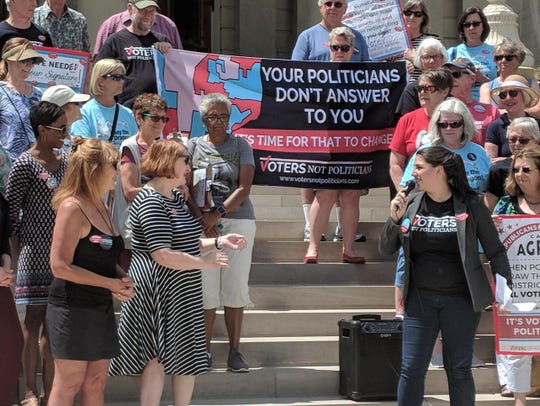Advertisement

LOS ANGELES — In the space of seven minutes on an airport tarmac on Wednesday, President Trump captured the thorny decision he faces as he once again straddles the edge of war and peace.
One moment, he threatened to order “the ultimate option” of a strike on Iran in retaliation for attacks on oil facilities in Saudi Arabia. The next he ruminated about what a mistake it had been for the United States to get entangled in Middle East wars and welcomed Iran’s president to visit.
To help sort through the alternatives, Mr. Trump on Wednesday named a hawkish new national security adviser, Robert C. O’Brien, the State Department’s chief hostage negotiator. But as Mr. Trump spoke with reporters, shouting to be heard over the roar of Air Force One engines, Mr. Trump sounded like a commander in chief searching for a way to be tough without pulling the trigger.
“It’s very easy to attack, but if you ask Lindsey, ask him how did going into the Middle East, how did that work out? And how did going into Iraq work out?” Mr. Trump told reporters, referring to Senator Lindsey Graham of South Carolina, a Republican ally who warned against showing “weakness” toward Iran. “So we have a disagreement on that. And you know, there’s plenty of time to do some dastardly things. It’s very easy to start.”
Mr. Trump’s team has developed a range of alternatives short of a retaliatory strike with bombs or missiles, including a new round of sanctions to further strangle Iran’s economy, the deployment of more American forces to the region as a deterrent against future provocations and a stepped-up cybercampaign to send a message of resolve to Tehran without bloodshed, officials said.
The president, who was wrapping up a three-day campaign trip to New Mexico and California, began Wednesday by vowing more sanctions on Iran to be detailed in the next 48 hours. Secretary of State Mike Pompeo arrived in Saudi Arabia and declared the attacks an “act of war” by Iran but talked mainly of rallying allies to enhance deterrence.
“That’s my mission here, is to work with our partners in the region,” Mr. Pompeo told reporters on his plane. “We will be working with our European partners as well,” he continued, adding, “We’re working to build out a coalition to develop a plan to deter them.”
The military options available to Mr. Trump are similar to the airstrikes that he called off at the last minute in June after Iran shot down an American surveillance drone. Among those potential Iranian targets were facilities like radar and missile batteries. Instead of missile attacks, the United States later mounted a cyberattack on Iran that avoided the casualties that Mr. Trump said concerned him.
Military planners at the Pentagon and at United States Central Command in Tampa, Fla., have forwarded a long-identified list of Iranian targets that could constitute a proportional response. Defense Secretary Mark T. Esper discussed those options with Mr. Trump and other top national security aides in meetings on Sunday and Monday, officials said.
The more aggressive options include strikes against Iran’s Abadan oil refinery, one of the world’s largest, or Kharg Island, the country’s biggest oil export facility, options first reported by NBC News.
But attacking them could escalate the conflict and pull the United States deeper into a Middle East conflict.
Other potential targets include missile launch sites, bases or other assets belonging to the Islamic Revolutionary Guards Corps, the elite Iranian unit blamed for much of Iran’s paramilitary operations against external foes.
American intelligence detected unusual activity at military bases in southwest Iran that would be consistent with preparations for missile and drone strikes like those against Saudi Arabia, two senior American officials said. Those bases could be among potential targets.
Any strikes against Iran would almost certainly be carried out by volleys of cruise missiles from Navy vessels. Strike aircraft would be aloft to carry out attacks if Iran retaliated against the first wave, but the priority would be to not endanger American pilots.
Michael J. Morell, a former acting director of the C.I.A., said on Monday night that the United States must retaliate, especially if Iran is found responsible for the attacks.

“We need to respond here, particularly if the attack occurred from Iran,” Mr. Morell said in a presentation at George Mason University in Virginia. “That is an act of war, not just a terrorist attack. I think we have to deter Iran.”
Senior officials said they were looking at cyberoptions, which would cause few or no casualties and would be considered a “proportionate response.”
American war plans have long included such options against Iranian oil production facilities, a feature of a plan called Nitro Zeus, developed years ago to cripple Iranian infrastructure without resorting to bombing.
The secret cyberattack in June wiped out a critical database used by Iran’s paramilitary arm to plot attacks against oil tankers and degraded Tehran’s ability to covertly target shipping traffic in the Persian Gulf, at least temporarily. Iran spent months trying to recover lost information and restart some of the computer systems — including military communications networks. It is not clear whether it has succeeded.
Military planners are also advancing the idea of deploying more American forces to the region without taking direct action against Iran. Gen. Kenneth F. McKenzie Jr., the commander of Central Command, which oversees American military operations in the Middle East, has pushed to send additional troops to the region, senior military officials said.
In meetings and in memos, the general has argued that the United States should view Iran as a great power or near-peer threat, much as the Trump administration’s formal national security strategy views China, Russia and North Korea.
Under that logic, the United States would include Iran along with China and Russia as a central threat, requiring sustained military commitment to the region. The attack on the Saudi oil fields, the officials said, is being used to bolster Central Command’s push for more resources.
But Capt. Bill Urban, a spokesman for Central Command, disputed that characterization, which was provided by senior Pentagon officials. “That is a wildly inaccurate representation of General McKenzie’s thoughts and counsel on both Iran and the National Defense Strategy,” he said, without elaborating.
Mr. Trump will be assisted in making his decision by Mr. O’Brien, who will replace John R. Bolton as the national security adviser. Mr. Trump announced the appointment via Twitter on Wednesday morning, and Mr. O’Brien, a Los Angeles lawyer, then joined him on Air Force One.
In selecting Mr. O’Brien, the president opted for an outspoken advocate of tough policies toward Iran and powers like Russia and China, leaving it unclear how his advice may differ from that of Mr. Bolton, an ally with whom Mr. O’Brien has worked in the past. Mr. Bolton left the White House last week in an acrimonious break with the president after unsuccessfully urging the June strikes on Iran and resisting diplomatic outreach to Tehran.
Mr. O’Brien will be Mr. Trump’s fourth national security adviser in less than three years, the most any president has had in a first term. He has written regularly about foreign policy and collected a series of essays in a book, “While America Slept: Restoring American Leadership to a World in Crisis,” published in 2016 with a cover blurb from Mr. Bolton.
In that book, Mr. O’Brien warned against “appeasement and retreat” as he excoriated President Barack Obama for what he deemed a weak foreign policy. “There is simply no evidence to support the idea that we can trust revolutionary Iran to give up its long-term goal of developing a nuclear weapon and delivery systems,” he wrote.
Although Mr. Trump abandoned Mr. Obama’s nuclear agreement, the president remains open to negotiations with Iran. His administration denied visas to some Iranians intent on traveling to New York for next week’s United Nations General Assembly session because of their ties to a designated terrorist group, but Mr. Trump said he would let top Iranian officials visit. “If it was up to me, I would let them come,” he said.
His disagreement with Mr. Graham, one of his closest allies, was notable. The senator said on Tuesday that the president’s decision to call off the airstrikes in June was seen by Iran as “a sign of weakness.”
On the Los Angeles tarmac on Wednesday, Mr. Trump rejected that, saying, “No, I actually think it’s a sign of strength.”
“There are many options,” Mr. Trump added. “There’s the ultimate option and there are options that are a lot less than that. And we’ll see. We’re in a very powerful position. Right now we’re in a very, very powerful position.”
Peter Baker reported from Los Angeles, and Eric Schmitt from Washington. Reporting was contributed by Helene Cooper, Michael Crowley, Lara Jakes, David E. Sanger and Edward Wong from Washington.


